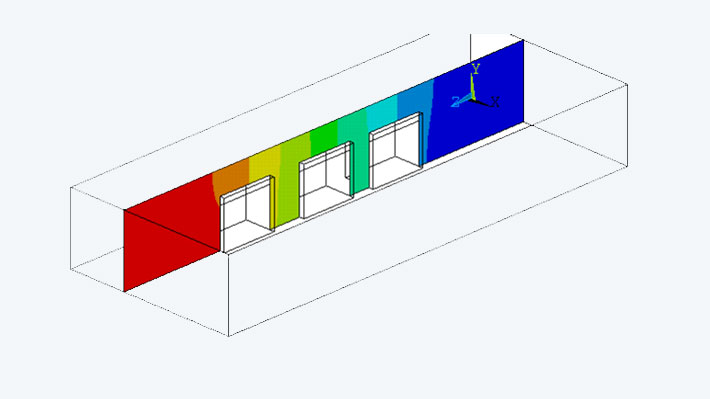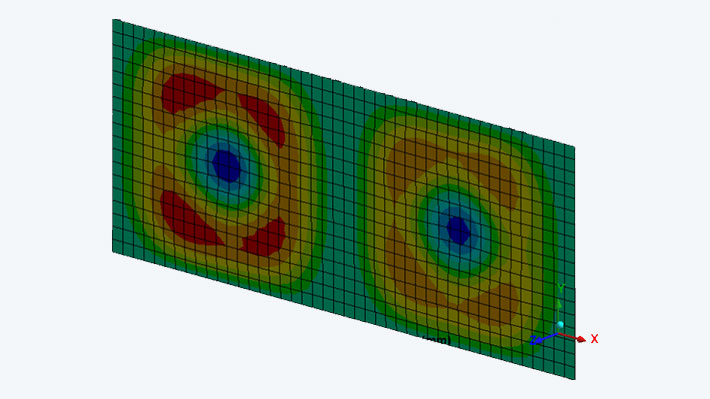ANSYS Fluid-Structure-Interaction (FSI) Analysis
Sector: Machinery and plant engineeringSpecialist field: Structural mechanics, AcousticsBühler AG, a Swiss company, provides innovative solutions for the food and feed industries and also for the advanced materials industry. Bühler AG provides plansifters designed for use in mills, and in this connection they had recourse to the simulation-based services offered by CADFEM in order to identify and reduce the mechanisms by which the vibrations that arise on glass panels and doors are transmitted.
Summary
Task
The challenge was for CADFEM to identify this potential transfer mechanism using FEM and take measures that would lead to a reduction in vibration.
Solution
The analyses generated by ANSYS FLUID30 take into account both pressure level and the degree of displacement in areas where there is any clearance, thus allowing the cavity to undergo excitation via the sifting motion generated by the plansifter. In turn, the acoustic vibrations within the cavity lead to structural vibrations.
Customer benefits
This enables the physical background of the problem and the sensitive parameters to be identified through use of a relatively simple simulation model which is capable of producing auspicious measuring data – meaning it is possible to forgo the need for expensive on-site experiments.
Project Details
Task
A plansifter is a device used by the food industry for sifting and separating granular media via the application of an oscillating motion. It was suspected that this low-frequency motion excites large vibrational amplitudes in the glass panels or doors found in mills. The task was to identify this potential transfer mechanism using FEM and to take measures that would lead to a reduction in vibration.

Customer Benefit
This model enables development engineers to test how a broad range of parameters affect the plansifter, examples of which would be:
- adding layers of acoustic cushioning to the faces,
- adding another face to increase the first acoustic cavity mode,
- what difference is made by shifting the excitation phase angles for the three sifters,
- using transition frequencies to excite the sifter.
This enables the physical background of the problem and the sensitive parameters to be identified through use of a relatively simple simulation model which is capable of producing auspicious measuring data – meaning it is possible to forgo the need for expensive on-site experiments.

Solution
Firstly, a finite element mesh is generated for the cavity. The three recesses in the mesh represent the outer skin of the sifter geometry. An initial acoustic modal analysis is then performed which assumes rigid faces. The result obtained takes the form of the first resonance frequency pertaining to the sifter recesses. As expected, the analysis affirms that there is a half-wave resonance that is characteristic of a rectangular cavity. Accordingly, this does not provide any indication regarding amplitude. In order to calculate the oscillation amplitudes of the large flexible glass windows, a harmonic analysis is performed that takes into account the fluid-structure interaction that occurs in relation to the faces of the sifter and the glass windows. ANSYS FLUID30 analyses take into account both pressure level and the degree of displacement, thus allowing the cavity to undergo excitation via the sifting motion generated by the plansifter. In turn, the acoustic vibrations within the cavity lead to structural vibrations. One of the ways in which these vibrations are revealed is in the oscillation patterns that occur on the front of the glass.

Images: © Bühler AG



